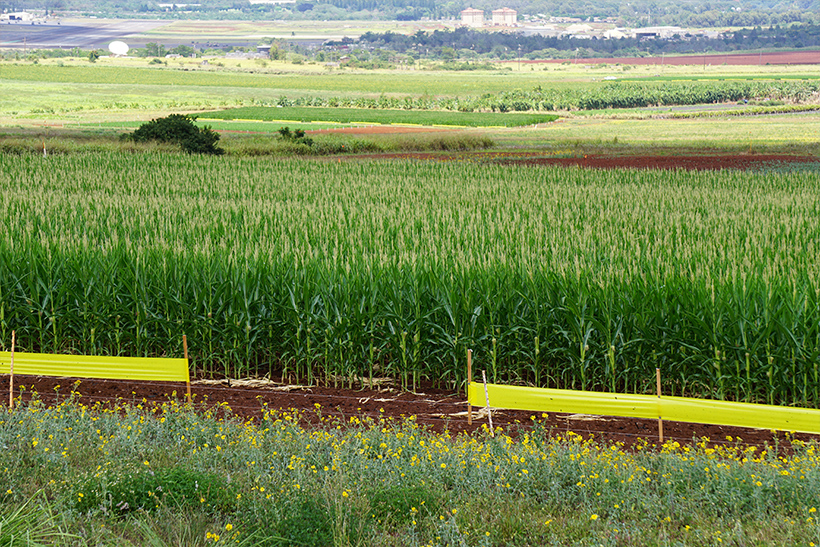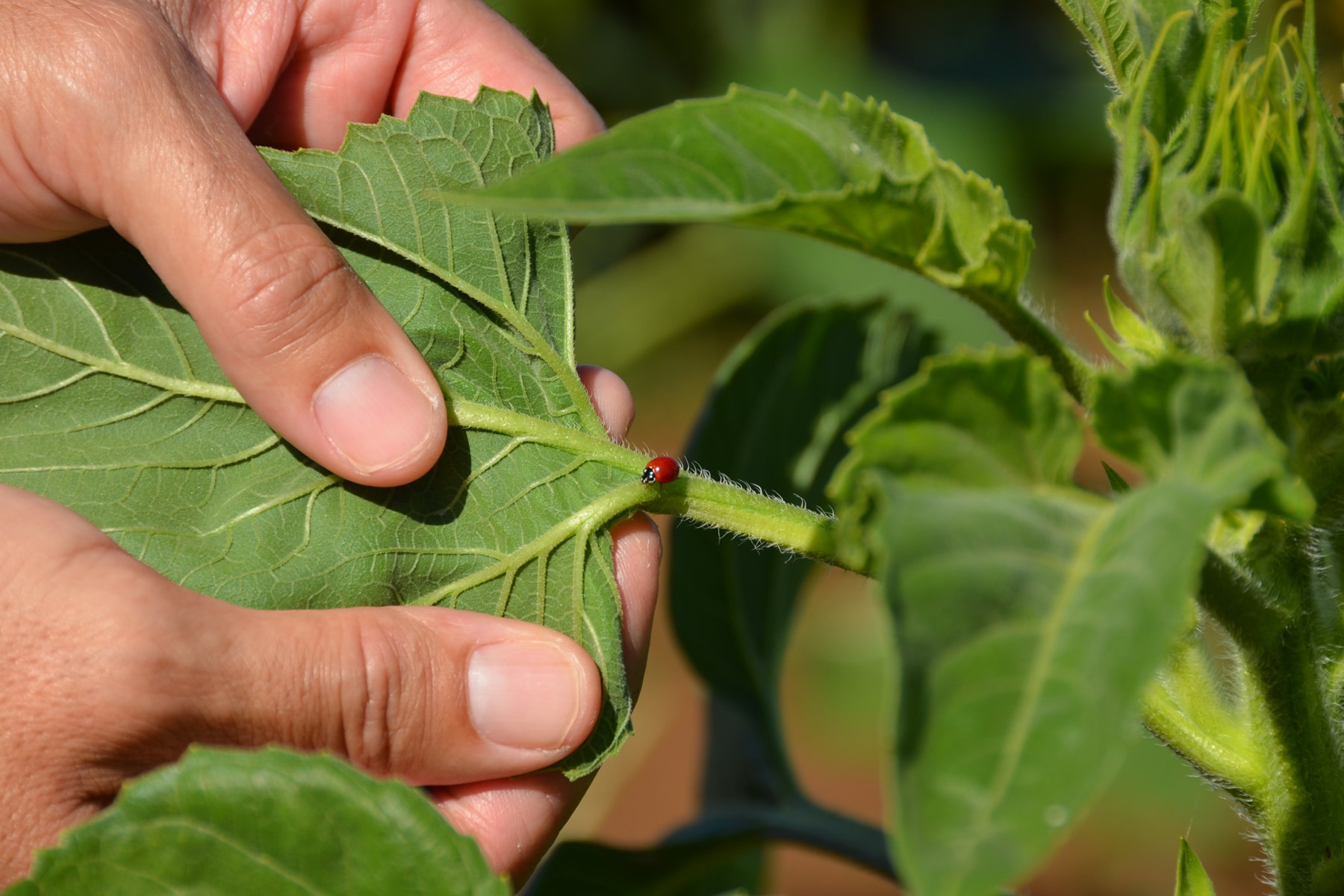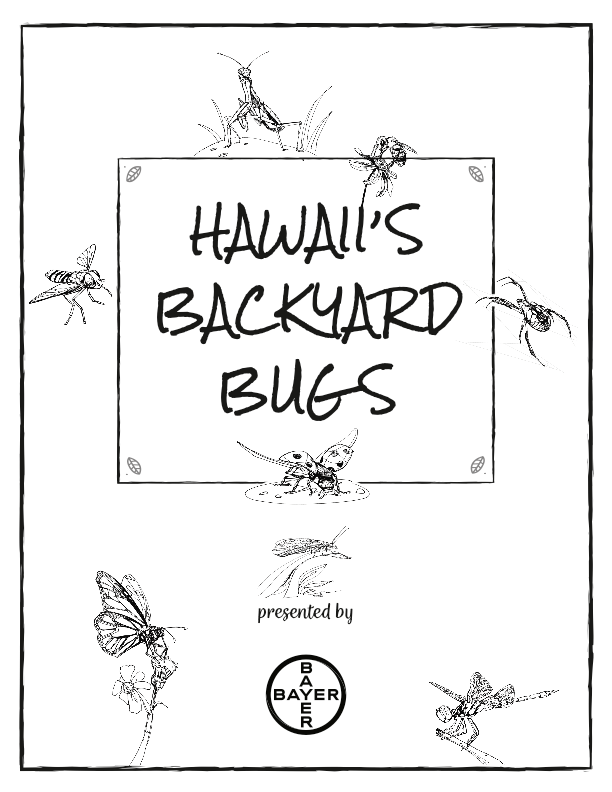- This Is Bayer
- Agriculture
- Consumer Health
- Pharmaceuticals
- Products
- Community
- News & Stories
- Careers
- This Is Bayer
- Agriculture
- Consumer Health
- Pharmaceuticals
- Products
- Community
- News & Stories
- Careers
Bayer Hawaii: Stop Bugging Our Crops
A common misconception in the world of farming or gardening, is that all bugs are bad. Creepy-crawly, pest or poisonous are just a few of the terms that might automatically come to mind. However, with more than 1.5 million known insect species in the world, only about 1% are considered bad.(1) In actuality, most insects are very useful.
Insects provide important products and services that benefit humans, such as pollination, honey, and beeswax. Other insects are beneficial because they specialize in controlling other insects, like the bad ones that attack our crops, as known as pests.
The farmers at Bayer Hawaii utilize a wide range of methods and tools to care for its crops – Integrated Pest Management (IPM) being one of them. IPM is a system of robust evaluations, careful decision-making and methodical controls to determine the best way to limit pest damage safely and economically for the long-term.

It all starts with scouting and proper pest identification. Physical controls such as netting to protect plants in the same way that window screens keep insects out of homes, and sticky traps, similar to fly paper or roach traps, are used to eliminate pests directly. Between harvests, biological controls are also used to leverage a pest’s natural enemies. For example, cover crops like oats, sunflowers, cowpeas and buckwheat do not only keep the soil healthy, they attract beneficial insects that help protect fields from unwanted pests. Pesticides are used as a last resort, only when the pest pressures have become too great.
Some examples of agricultural pests that can be found on Bayer’s farms are aphids, caterpillars, moths, mealybugs, and leafhoppers. Pests damage plants by feeding on leaves or harvestable products, while others cause damage by transmitting viruses that make plants sick.
Beneficial insects, like the lady bug, are most welcome by gardeners and farmers due to their biological control of aphids. They’re known to eat up to 4,000 aphids in their lifetime! Currently, there are more than 6,000 species(2) of lady bugs worldwide, 15(3) of which can be found right here in Hawaii.

Educating the community and Hawaii’s youth about the importance of good bugs and their contributions to agriculture and health of the planet, is a priority for Bayer Hawaii. Earlier this year, Bayer released a coloring book as a fun and interactive way to teach children about this important topic.

To learn more, or do download Bayer’s Backyard Bugs coloring book, please visit: https://www.bayer.com/en/us/bayer-hawaii-releases-childrens-coloring-book-about-hawaiis-backyard-bugs
(2)https://www.researchgate.net/profile/Wan_Nur_Madihah_Wan_Abd_Halim/publication/317260209_DNA_barcoding_and_relationships_of_eight_ladybugs_species_Coleoptera_Coccinellidae_that_infesting_several_crops_from_Peninsular_Malaysia/links/59fffa35458515d0706e56e8/DNA-barcoding-and-relationships-of-eight-ladybugs-species-Coleoptera-Coccinellidae-that-infesting-several-crops-from-Peninsular-Malaysia.pdf
(3)https://www.ctahr.hawaii.edu/oc/freepubs/pdf/Ladybeetle%20poster2.pdf
